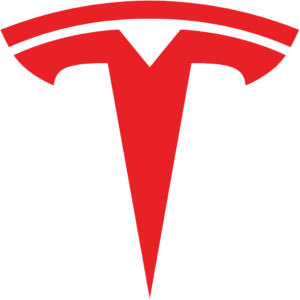In this series of seven blogs, we will cover the information you need to know about charging battery powered electric vehicles (EVs). To make the topic easier to digest, we have broken it into seven short blogs, namely:
- Part 1 – Battery and battery charging basics
- Part 2 – Battery performance measures
- Part 3 – EV battery charging – charging levels and home charging
- Part 4 – EV battery charging – outside the home; connectors and charging companies
- Part 5 – EV battery charging – problems with public charging stations; EV charging costs versus ICE-powered fueling costs
- Part 6 – Looking at EV charging’s big picture
- Part 7 – Trends in solar power that will accelerate the move to electric vehicles
Problems with public charging stations:
As with any rapidly growing technology and industry, currently there are numerous problems involved with the use of public electric vehicle charging stations, namely:
- Despite their rapid growth, there are still not enough of them, in specific locations, and especially in rural areas. By far most charging stations are found in California, where – no surprise – – most of the electric vehicles in the US, both Battery EVs (BEVs) and Plug-in Hybrid Electric Vehicles (PHEVs), are located.
- Some stations are either of a popular brand and/or are in a ideal location. As a result, they are quite popular and the availability of a charging cable may be hard to secure.
- Many stations are very small – some only containing one charging device, perhaps with two cables.
- Many charging stations are difficult to find, even with the use of today’s in-car or cellphone-guided maps and directions. Often, they are tucked away behind a building, for instance.
- Often, individual stations or connectors are inoperable, thus reducing the capacity of the overall charging location.
- Occasionally, the station’s charging cables are not long enough to reach certain vehicles.
- Sometimes, charging station slots are occupied by “illegal” parkers’ Internal Combustion Engines (ICE)-powered vehicles.
- Sometimes, the charging stations are in either dark, dirty, or dangerous locations.
- Many charging stations are not located next to clean restrooms or restaurants or coffee shops where EV drivers and passengers can freshen up or shop while their vehicle is charging.
- Some charging companies charge very high prices for the use of their charging stations. Rapidly increasing competition in addition to a continuing drop in the cost of electrical energy will help ameliorate this problem in the very near future. Tesla Model S and X owners get free charging for the length of their ownership. Model 3 and Y owners usually have to pay 28 cents per kW for Tesla superchargers.
Successful charging stations in the future will be modeled after the hugely successful Buc-ee’s gas stations in Texas where there are scores of gas pumps, clean, plentiful, and well-lit restrooms with 50 to 100 toilets, and a well-stocked convenience store of food, snacks, drinks, and items such as candy, t-shirts and other apparel, etc.. Tesla’s charging stations in this country and the new chain of more than 100 GRIDSERVE Electric Forecourts charging stations (for any type of electric vehicle) being established in the UK (gridserve.com) set the standard for more conventional electric vehicle charging stations.
Electric vehicle charging costs versus fueling ICE-powered vehicles:
Consider home EV battery charging first. Assume your power company’s price is 12 cents per kWh. Assume an average daily drive of 33 miles (approx. 12,000 miles a year). Further assume your electric vehicle’s overall efficiency is 4 miles per kWh. Thus the average daily cost to recharge your vehicle’s battery (assuming non-peak hour charging, i.e., overnight) is 33 miles divided by 4 miles per kWh times $0.12 per kWh equals $0.99. Multiply this by 30.4 days in an average month and you arrive at $30.10 a month drive 1003.2 miles and recharge your battery powered electric vehicle at home under every day and normal weekend use. The $30.10 divided by 1003.2 miles per average month equals 3.0 cents a mile!
Assume an “equivalent” gas-powered vehicle gets 20 miles per gallon around town, and regular gasoline costs $2.20 a gallon (eat your heart out Californians!). So 1003.2 miles divided by 20 mpg equals 50.16 gallons times $2.20 a gallon equals $110.35 in gasoline for the average month, or 11.0 cents a mile. The BEV “fuel” cost is a mere 27.3% of the ICE-powered vehicle’s. HELLO!! You have just discovered one of the best things about battery powered electric vehicles – their energy (and maintenance) costs typically run about one-third that of ICE-powered vehicles.
This pleasant surprise has a great deal to do with the efficiency of the gasoline-powered engine versus electric motors. The laws of thermodynamics limit the traditional gasoline engine to around 30% efficiency – the rest of the energy derived from the gasoline is wasted in heat. Diesel engines offer a bit higher efficiency than gas engines, but neither forms of an internal combustion engine are anywhere near competitive with electric motors. Electric motors’ efficiencies run in excess of 95% — Tesla’s even higher!
Now, let’s consider a long over-the-road vacation trip. Assume we are going to drive from Austin, TX to Washington for a two-week vacation, exploring the many attractions in the Baltimore-Annapolis-Washington DC area. Google maps says that is a 1,524 mile trip one way. Assume you would drive an average of 50 miles a day while there in the area. So five days travelling and 9 days at 50 miles a day equals 3,498 miles total.
Keep most of our assumptions from the around home example, but this time we will be paying more for the enroute charging for our BEV. 3,498 miles divided by 4 miles a kWh equals 874.5 kWh we need to buy to recharge our electric vehicle’s battery. (I am neglecting that we would start from home with a home charged (low cost) full battery charge.) Tesla usually charges 28 cents a kWh at its charging stations, unless you have a Model S or X, where there is no charge. Assume we are in a Tesla Model 3. So our cost of battery charging for the trip would be $0.28 a kWh times 874.5 kWh equals $244.86 for the electrical power, or 7.0 cents a mile. Note that other charging companies charge more than Tesla – – sometimes by a factor of two or three!
If we had taken our gasoline powered vehicle described above, assuming 26 miles per gallon on a trip, our fuel cost would be 3,498 miles divided by 26 mpg equals 134.5 gallons used times $2.20 a gallon equals $295.90, or 8.5 cents a mile. The BEV’s energy costs is still 17.6 % less than the gasoline-powered vehicle’s in this scenario. The reader can alter the numbers used in these calculations to fit the conditions in their part of the country, or the specifications of their BEV or ICE-powered vehicle. It is usually the case that the battery powered electric vehicle wins!
Yes, I know that theoretically the electric vehicle’s battery charging stops take longer than pumping twelve to eighteen gallons of gasoline to fill a tank. I also estimate that a trip of this mileage in a long range Model 3 would require about ten to twelve recharging stops at Tesla Superchargers, each of no more than thirty minutes duration. Only a portion of these would require driving interruption however — some charges would be at destinations overnight.
In my experience, it’s a rare event, especially on a vacation with family, when you can actually travel non-stop for more than 250 to 300 miles at a time. Someone is always hungry, or needs a bathroom stop (even the dog!), or wants to “stretch their legs”, or wants to buy coffee, soda, or snacks. So even the average “gas” stop has a way of stretching to twenty or thirty minutes, especially with lines of other people slowing those activities. The difference is that while you are performing those activities, the gas hose is connected to your ICE-powered vehicle for three to five minutes, but the charging cable is connected to your electric vehicle for twenty to thirty minutes.
Featured image from Pixabay
The next blog in this series is: Looking at EV charging’s big picture
Your feedback in the form of comments or suggestions are welcome in the comment window. Thank you for following my blogs on this site and for participating in my blogging community.




